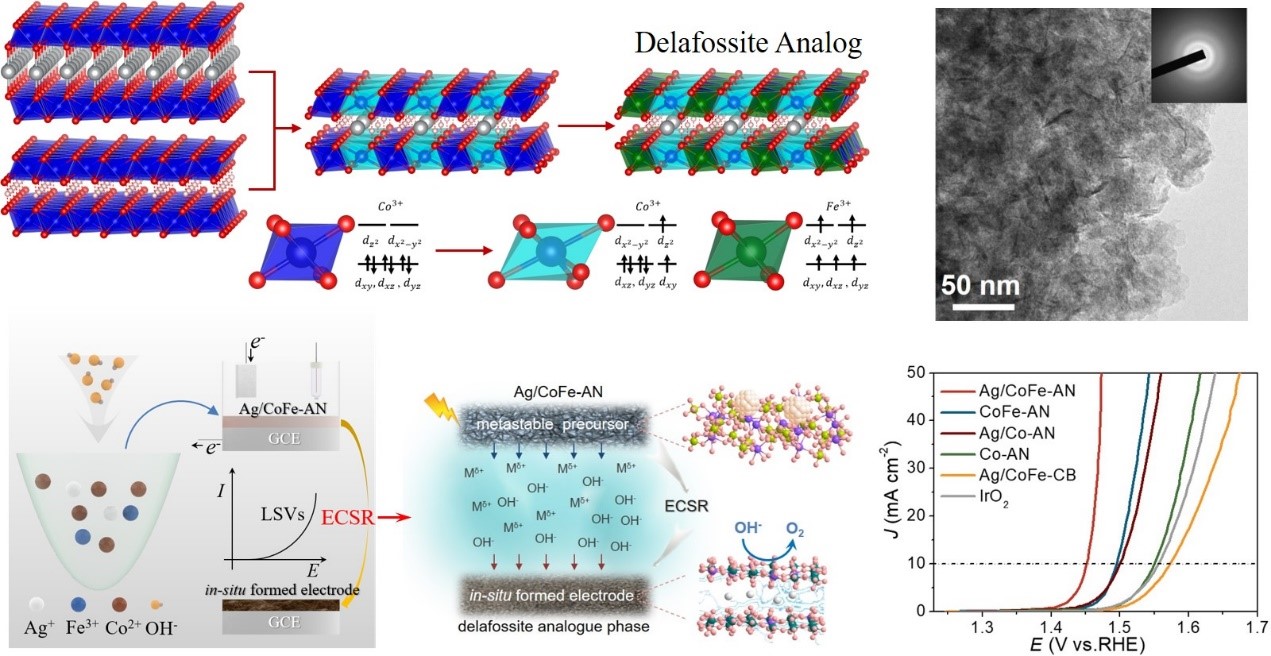The team of Prof. Guo Lin from the School of Chemistry and Prof. Liu Limin from the School of Physics published an article entitled “Achieving Delafossite Analog by in-situ Electrochemical Self-Reconstruction as An Oxygen-evolving Catalyst” in Proceedings of the National Academy of Sciences of the United States of America(PNAS) on August 27, reporting the synthesis and electrocatalytic properties of delafossite analog.

The design and preparation of highly efficient oxygen evolution reaction (OER) electro-catalyst materials is one of the core points for breakthroughs in energy storage and transformation technologies such as fuel cells and electrolytic water. Layered material catalysts have garnered widespread attention because of their unique structural characteristics. The layered compound delafossite analog was discovered in 1873, but due to its poor conductivity and inherent activity, its application in the field of electrocatalysis was limited.
The research team combined the characteristics of two layered structures of delafossites and hydroxides, and designed and synthesized a new delafossite analog by intercalation of Ag into cobalt-iron oxide layers between Co/FeO6 octahedral layers under the guidance of theoretical simulation. Different from traditional delafossite analog, this new structure has a unique electronic configuration that not only can modulate the electronic structure and improve electrical conductivity, but also shows superior OER activity, making it an ideal catalyst.
The team developed an in-situ electrochemical self-reconfiguration strategy to convertmetastable Ag nanoparticles attached on cobalt–iron hydr(oxy)oxide amorphous nanosheets (Ag/CoFe-AN) as precursors to amorphous delafossite analog active substances through voltage-induced ion dissolution and reprecipitation. Such delafossite analog shows excellent OER activity, featuring a current density of 10 mA⋅cm−2 at an overpotential of 187 mV and an excellent stability (300 h) in alkaline conditions.
A new method of structural design and modification to excavate traditional materials was proposed in this research, providing a new way for the design of new catalytic materials.

More information is available at:
https://www.pnas.org/content/early/2020/08/25/2009180117
Reported by Liu Naipeng
Reviewed by Li Hongjie
Edited by Jia Aiping
Translated by Feng Yueyue

